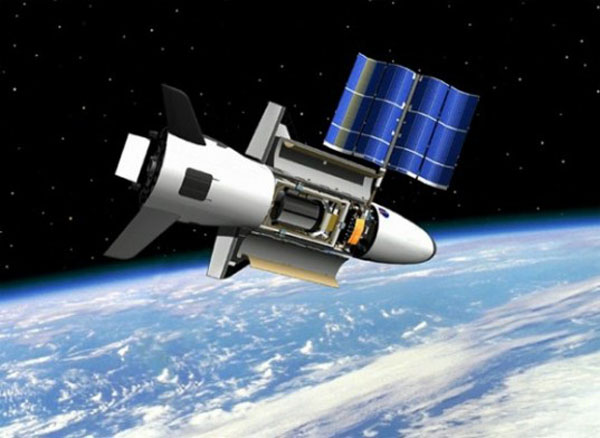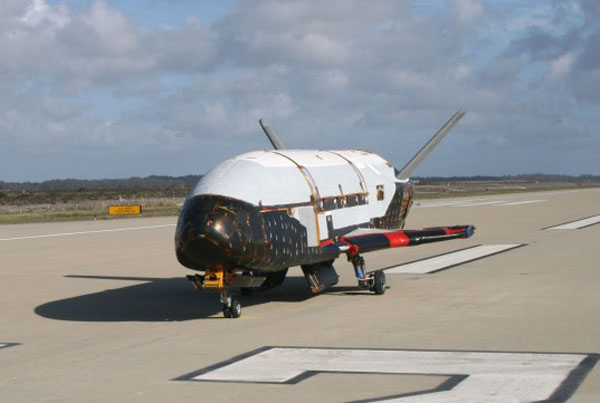Its purpose is shrouded in mystery but we do know one thing about the U.S. Air Force’s robotic X-37B space plane, which flew back to Earth recently after a 15-month stint in orbit: It runs on solar.
During its time in orbit the X-37B deployed solar panels to power itself. The gallium arsenide solar cells charged lithium-ion batteries for the craft’s internal systems.

What those internal systems are and what payload the 29-foot-long craft was carrying remains top secret.
In fitting with its clandestine status the plane touched down on Earth in the eery dawn light in California’s Vandenburg Air Force Base recently.
The moment was captured on video by officials at the Air Force base. The first part of the landing was filmed with a heat sensitive infrared video so that the nose of the craft can be seen glowing hot, presumably as a result of re-entry into Earth’s atmosphere.
The vessel, which is unmanned and looks like a smaller version of a conventional space shuttle, launched into space March last year. It was carried into orbit via an Atlas 5 booster from Cape Canaveral Air Force Station in Florida.
The use of solar panels for spacecraft long predates their adoptions as a renewable energy source on earth. Space satellites have used the sun’s rays to power themselves for a number of years.
The solar panels used to power satellites are actually quite different from those powering homes and businesses here on Earth. The harsh reality of generating power in outer space requires solar panels to be both highly efficient, and capable of tolerating extreme temperatures.
Solar panels have also been used to power deep space missions to the moon and other planets within our solar system, including Mars.
The X-37B, also known as Orbital Test Vehicle-2 (OTV-2), was the second mission for the X-37B program. An earlier spaceflight by OTV-2’s sister ship, OTV-1, lasted 225 days, well below the 469 days managed by this latest mission.
The craft is significantly smaller than a conventional space shuttle (two X-37Bs could fit inside the payload of a single shuttle) and weighs in at around 11,000-pounds.

The unmanned plane’s presence in space has been a matter of some speculation with reports from China suggesting it be a space weapon of some sort. Air Force officials have reportedly downplayed this idea, insisting that the spacecraft is testing out satellite technology.
However, the Air Force has refused to say anything more than that, acknowledging only that the most recent mission was “a spectacular success.”
The X-37B was built for NASA by the aircraft maker Boeing and was originally used as an experimental test bed by the space agency. After being passed on to the Defense Advanced Research Projects Agency, the craft finally ended up in the hands of the Air Force in 2006.